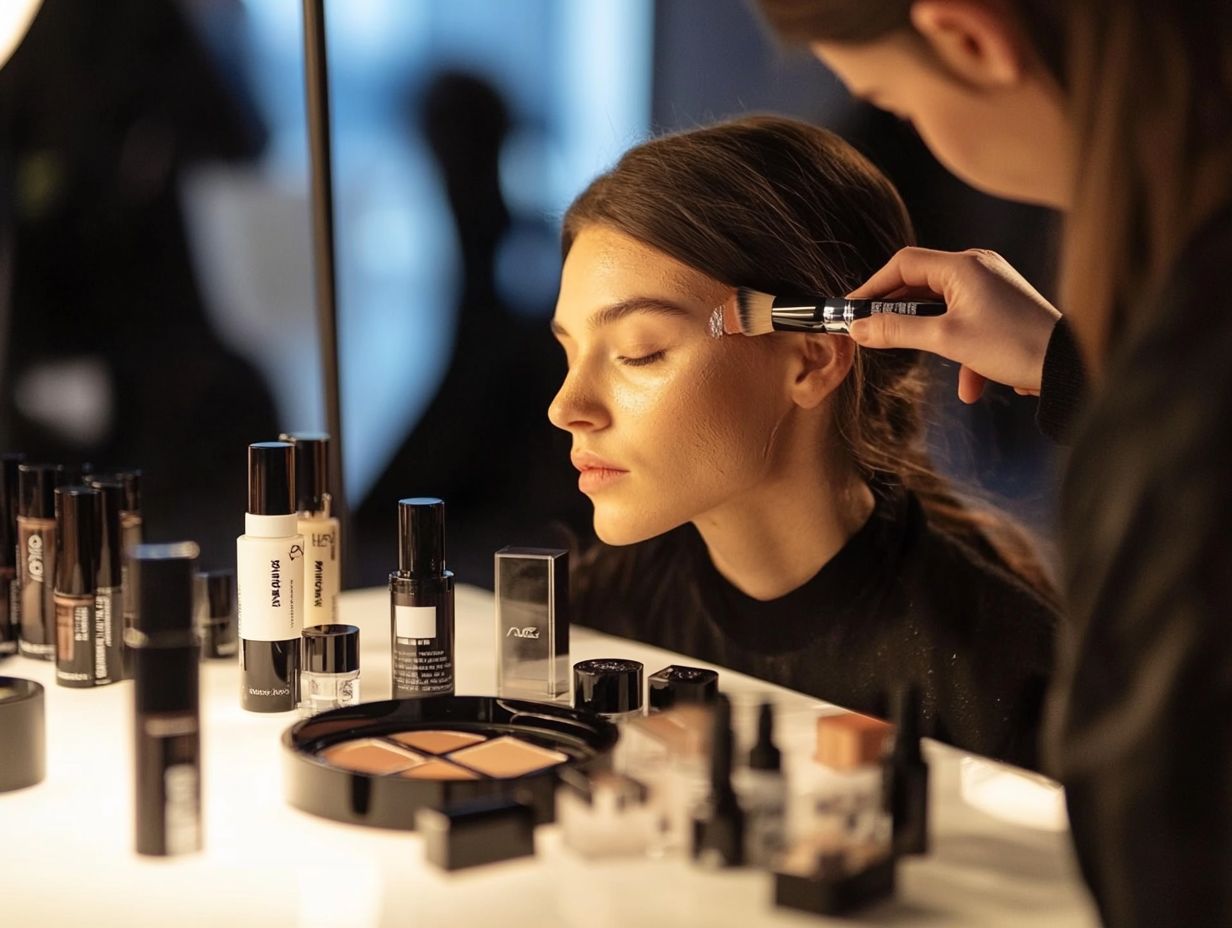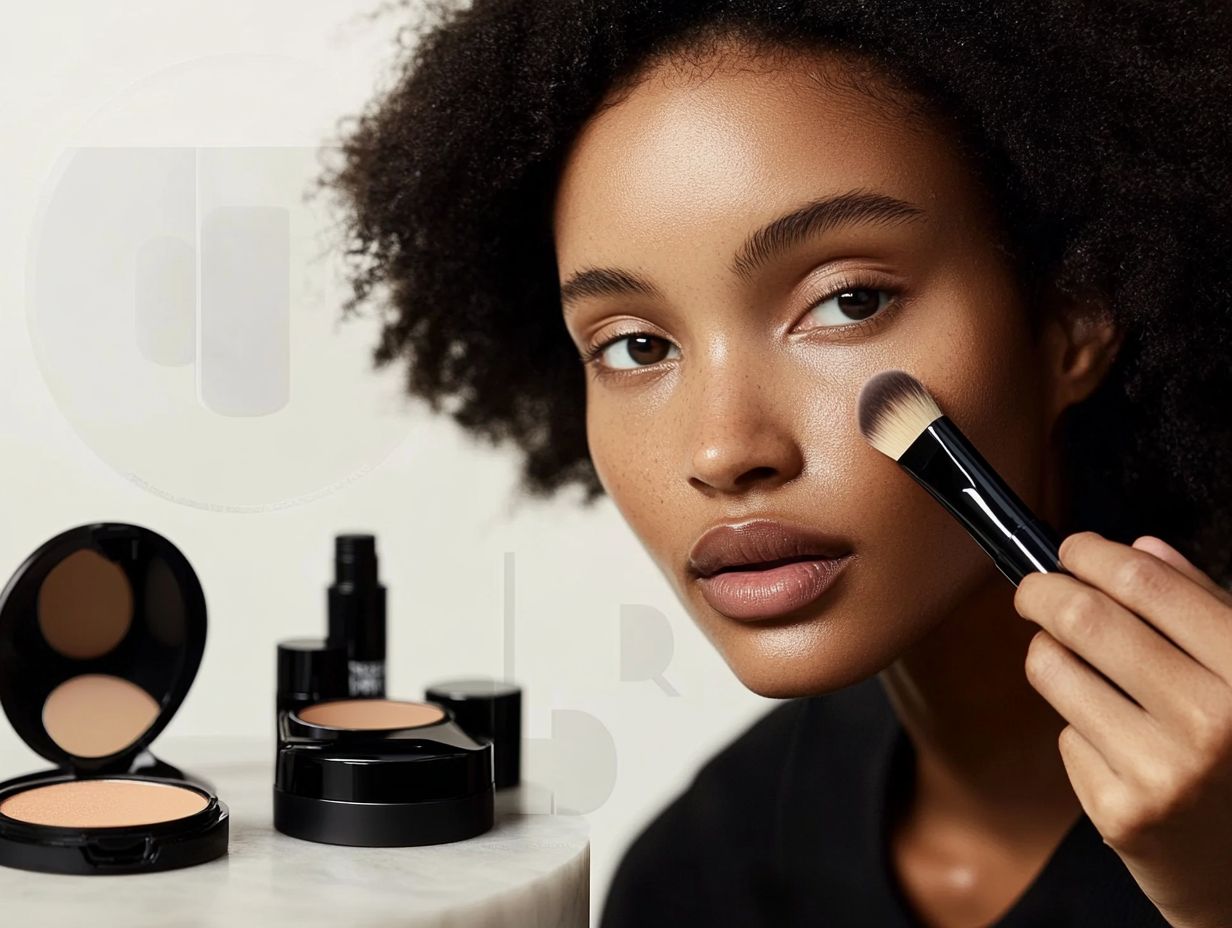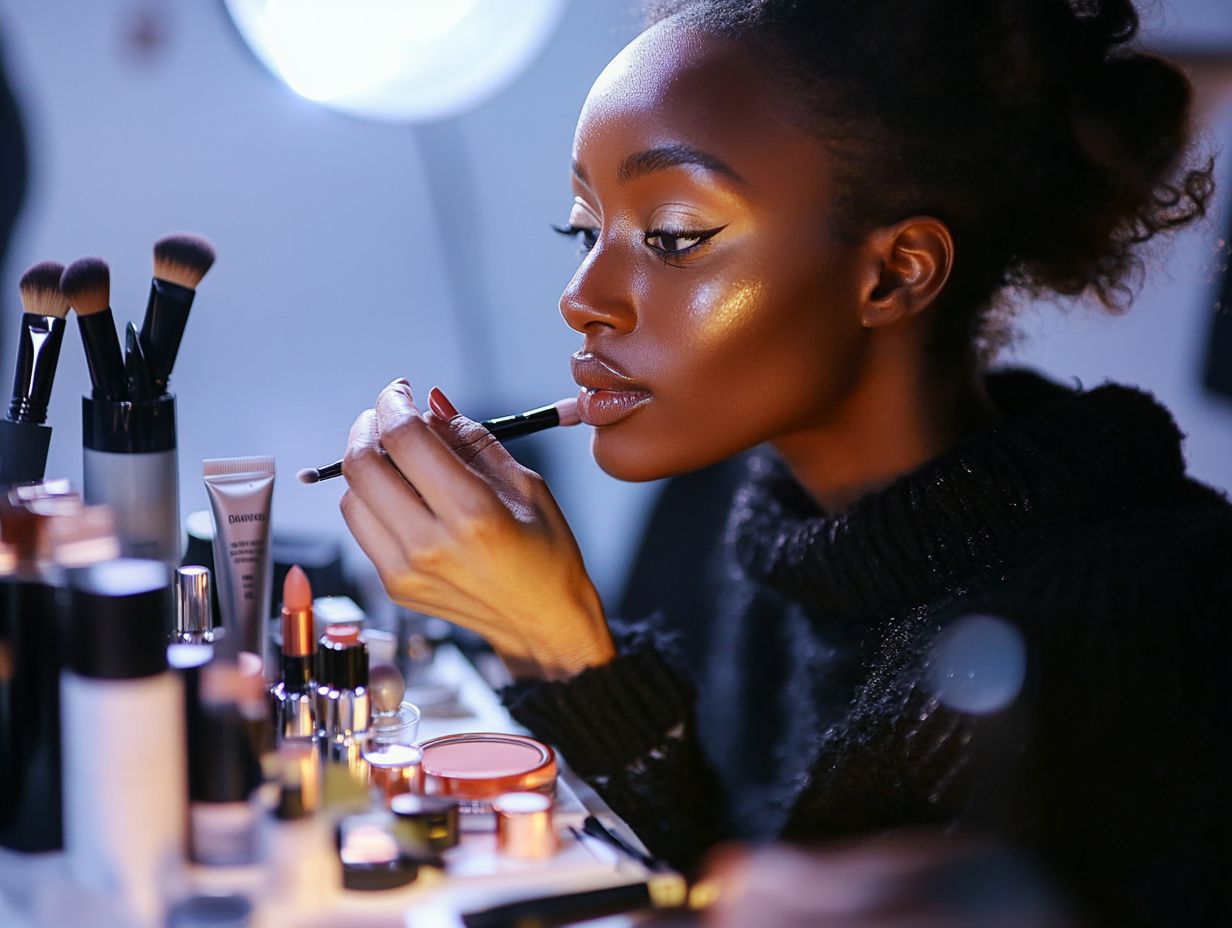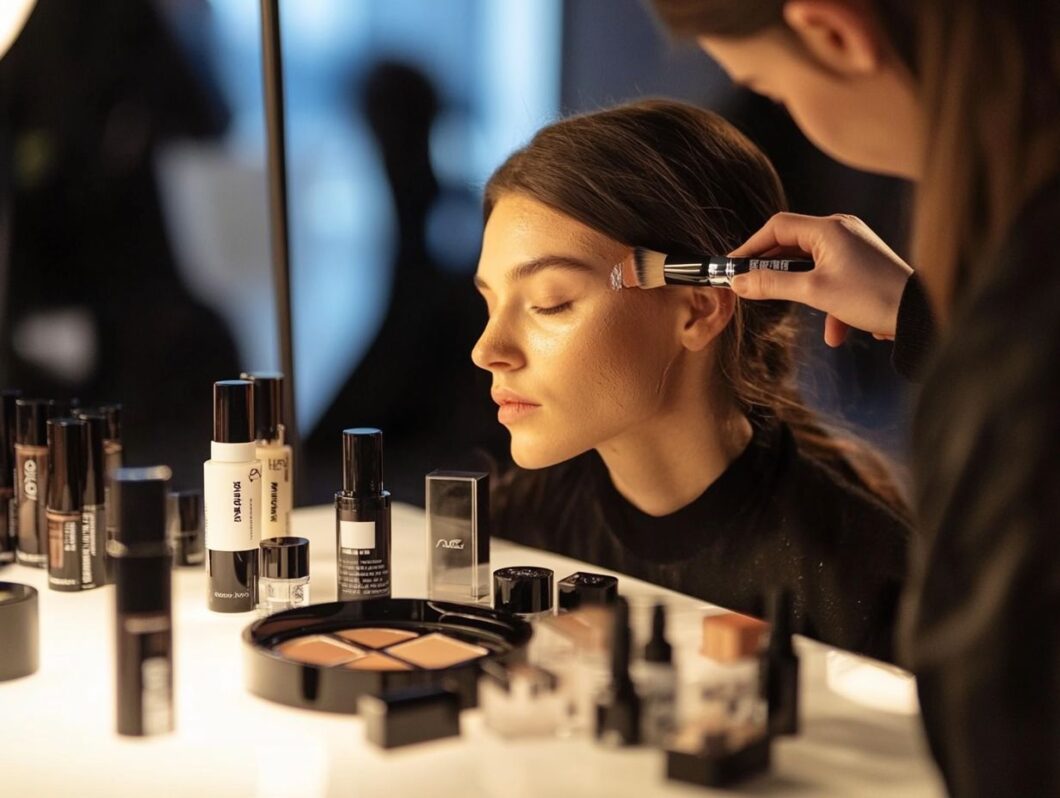Primers are often the unsung heroes of makeup routines, setting the stage for a flawless finish. These versatile products not only enhance the application of foundation but also extend the wear of makeup throughout the day.
In this article, I will explore what primers are, their numerous benefits, and the various types available for different skin types. You will learn how to choose the perfect primer for your specific needs and discover effective application tips.
Prepare to unlock the secret to a long-lasting, radiant look.
Key Takeaways:
What are Primers?

Makeup primers are essential beauty products that I consider crucial for creating a smooth canvas for foundation, ultimately enhancing the overall makeup application experience.
They are available in various formulations to accommodate different skin types, including oily, dry, and sensitive skin. A high-quality primer can significantly improve the texture of my complexion while offering benefits such as hydration, blurring fine lines, and extending the longevity of my makeup.
Whether I opt for a hydrating formula with hyaluronic acid or a mattifying option for oil control, selecting the right primer can elevate my makeup routine and leave my skin looking glowy and flawless.
Benefits of Using Primers
I find that the benefits of using makeup primers are numerous, making them an essential step in any makeup routine.
Primers enhance makeup application by allowing foundation to glide smoothly over the skin and help achieve a flawless finish by blurring imperfections and minimizing the appearance of fine lines.
Furthermore, they significantly increase the longevity of makeup, ensuring it remains intact throughout the day, whether I’m aiming for a radiant look or a matte finish.
Improving Makeup Application
Utilizing a makeup primer can significantly enhance my makeup application process by providing a smooth base that improves the overall finish of my makeup. Primers are essential for achieving a flawless look, as they effectively fill in pores and fine lines, allowing foundation and other products to apply evenly and seamlessly.
I recognize that different formulations, such as hydrating and mattifying primers, can greatly influence how makeup adheres throughout the day.
For example, hydrating primers are particularly beneficial for individuals with dry or combination skin, as they infuse moisture and create a dewy finish that enhances the skin’s natural glow. Conversely, mattifying formulas are ideal for those with oily skin, as they control excess shine and help prolong makeup wear by absorbing oil.
The consistency of these primers not only affects how products layer on top but also impacts the overall texture of the skin. Therefore, it is crucial for me to select a primer that aligns with my skin type to achieve optimal results.
Increasing Longevity of Makeup

A key benefit of using primers is the increased longevity they provide for makeup, ensuring my look lasts from morning until night. By creating a barrier between my skin and makeup, primers help prevent fading, smudging, and breakdown, which is especially important in challenging environments such as humid weather or for individuals with oily skin.
Different formulations of primers, such as silicone-based or water-based options, can significantly impact the wear of my makeup. Silicone primers create a smooth canvas by filling in fine lines and pores, allowing my foundation to glide on effortlessly and remain intact throughout the day. On the other hand, water-based primers offer hydration, adding moisture that keeps my skin looking fresh all day long.
For those of us who struggle with oiliness, mattifying primers can be particularly beneficial as they control shine and absorb excess oil, thereby extending the wear time of both foundation and concealer.
Products like the Hourglass Veil Mineral Primer and the e.l.f. Matte Oil Control Primer are excellent examples that demonstrate the effectiveness of these formulations in achieving a flawless look that endures.
Different Types of Primers
I have discovered that there are various types of makeup primers specifically designed to address the unique needs of different skin types and makeup preferences.
For instance, I find hydrating primers particularly effective for adding moisture to dry skin, while mattifying primers work exceptionally well for oily complexions. Selecting the right product can truly enhance my overall look.
Additionally, I appreciate the availability of specialty primers that target specific concerns, such as reducing redness or minimizing pores, which ensures a smooth and even application of foundation.
Primer Options for Different Skin Types
Choosing the right primer for my skin type is crucial for achieving the desired makeup look and ensuring its longevity. I find that individuals with dry skin, like myself, may benefit from hydrating primers that contain ingredients such as hyaluronic acid.
In contrast, those with oily skin might prefer mattifying primers to effectively control shine and maintain a smooth texture.
For anyone with sensitive skin, I recommend primers infused with soothing ingredients like chamomile or aloe vera, as they can help reduce irritation and provide a calming effect. These specific formulas not only enhance makeup application but also create a protective barrier against potential irritants.
Using a quality primer tailored to my skin type can significantly impact the overall coverage and finish of my makeup. It allows for a seamless blend and a polished appearance. I often choose a silicone-based primer to help fill in fine lines and pores, creating an ideal canvas for foundation, regardless of my skin texture.
How to Choose the Right Primer for You

Selecting the right primer is crucial to enhancing my makeup routine, as it ensures that my products apply smoothly and maintain their longevity throughout the day.
In choosing the ideal primer, I take into account various factors, including my skin type, the desired finish, and any specific makeup concerns I aim to address, such as redness or fine lines.
By thoroughly understanding these aspects, I can identify the most effective primer for achieving a flawless application.
Factors to Consider
It seems there was an error in the input provided.
Please share the text you’d like me to rewrite, and I’ll be happy to assist you in transforming it into a first-person, professional tone.
Tips for Applying Primers
Applying primers correctly is essential for maximizing their benefits and ensuring a flawless makeup application. I start with clean, moisturized skin to achieve optimal results.
Using either my fingers or a makeup sponge, I carefully apply the primer evenly across my face, paying particular attention to areas where I aim to smooth the texture or improve coverage.
Proper Application Techniques

To achieve optimal results from my primer, I understand that proper application techniques are essential. I start with a small amount of product and gently press it into my skin using either my fingers or a makeup sponge. This approach ensures even coverage, especially around areas like the nose and forehead, where makeup tends to wear off more quickly.
I have found that working in small sections is crucial, as it prevents the primer from drying too fast. This technique allows me ample time for the product to meld seamlessly with my skin. Instead of rubbing, I use a tapping motion, which not only aids in even distribution but also minimizes the appearance of pores, creating a smoother canvas for the layers that follow.
Applying primer in upward strokes promotes a lifted look, enhancing the overall makeup finish. Ultimately, my application technique significantly influences the longevity and vibrancy of my makeup, helping me achieve an impeccable look that lasts throughout the day.
Maximizing the Benefits of Primers
Maximizing the benefits of primers requires more than simply applying them; it also involves understanding how to effectively combine them with other makeup products in my routine.
By using primers alongside the appropriate foundation and concealer, I can enhance my overall look, ensuring smooth coverage and a flawless finish that endures throughout the day.
Combining Primers with Other Makeup Products
Combining primers with the appropriate makeup products can significantly enhance my beauty routine and improve the overall finish of my look. For instance, pairing a hydrating primer with a lightweight foundation helps me achieve a radiant, glowy complexion, while using a mattifying primer under a full-coverage foundation effectively controls shine.
“`html
The ideal combination often depends on individual skin types and desired effects. For example, I find that individuals with dry skin benefit from using a dewy primer alongside a cream concealer for added hydration and seamless blending. Conversely, those with oily skin might prefer a silicone-based primer paired with a matte concealer to minimize excess oil. To learn more about the benefits of primers, check out The Power of Primers: Boosting Your Makeup’s Staying Power.
“`
Additionally, leveraging a color-correcting primer allows me to neutralize skin tone imperfections before applying foundation, ensuring that my final look remains polished and vibrant throughout the day.
By strategically selecting primers that align with specific foundations and concealers, I can tailor my makeup application to achieve a flawless finish.


